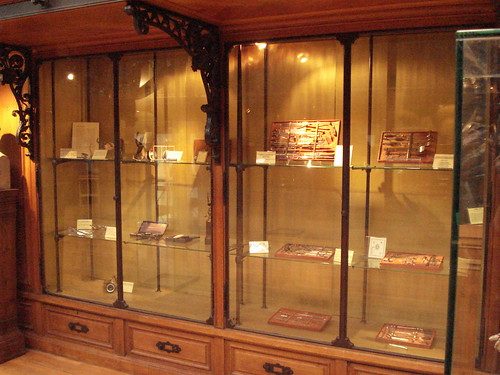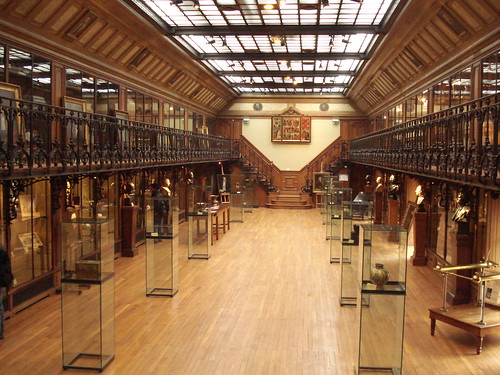The other day I went to take a look at the Musée d’Historie de la Médecine, located on the second floor of the magnificent Université René Descartes (Paris 5) headquarter building in rue de l’École de Médecine.

I had expected yet another traditional, dull and didactical display of medical history, but got a pleasant surprise—a medical history museum in the disguise of an art gallery!
Compared to other European medical history collections, this one (founded in 1795 and moved to the present room in 1954) is not particularly big. But it is quite representative, especially on the surgical instrument side, covering the long range from ancient Egypt and classical Antiquity to the early 20th century. And there are several quite exquisite objects—e.g., a late 18th century wooden anatomical mannequin, a late 19th century carbolic acid desinfection chamber, one of Jean-Antonin Désormeaux’s pioneering endoscopes, Étienne-Jules Marey’s portable polygraph, and so on and so forth (some of the artefacts can be seen on the collection page; but don’t expect too much, because web presentation is not this museum’s strongest side :-).
The objects are neatly displayed in glass showcases along the walls and in a few decoratively placed transparent podiums on the floor.

There are no explanatory posters, wall texts or images that take the attention away from the artefacts themselves—just a few large oil portraits and busts of French medical doctors. And like in an art museum, the discrete small-sized labels just give the bare necessities (in French only, of course :-).

The impression of classic art gallery is enhanced by the huge room, lit from above by a diffuse natural light from the glass ceiling:

Why has this beautiful little museum escaped the wave of didacticism and contextualism that has swept over most of the European and North-American medical history museum world in the last three-four decades?
One reason may be that it is hidden away on a side-street in the Paris Latin Quarter; another that the owners seem to be totally unware of what is gong on in the Anglophone world. But there is also a more probable explanation: the present display is the oeuvre of an art curator, viz., the current head of the collection, Mme Marie-Véronique Clin-Meyer, who was trained at the Musée du Louvre in the 1970s and later directed the Maison Jeanne d’Arc in Orléans.
Whatever the reason—this is a great place which is worth a detour if you happen to be in Paris! Hopefully, the Université René Descartes is not entertaining the idea of ‘modernizing’ this gem of a medical pre-20th century art gallery.

